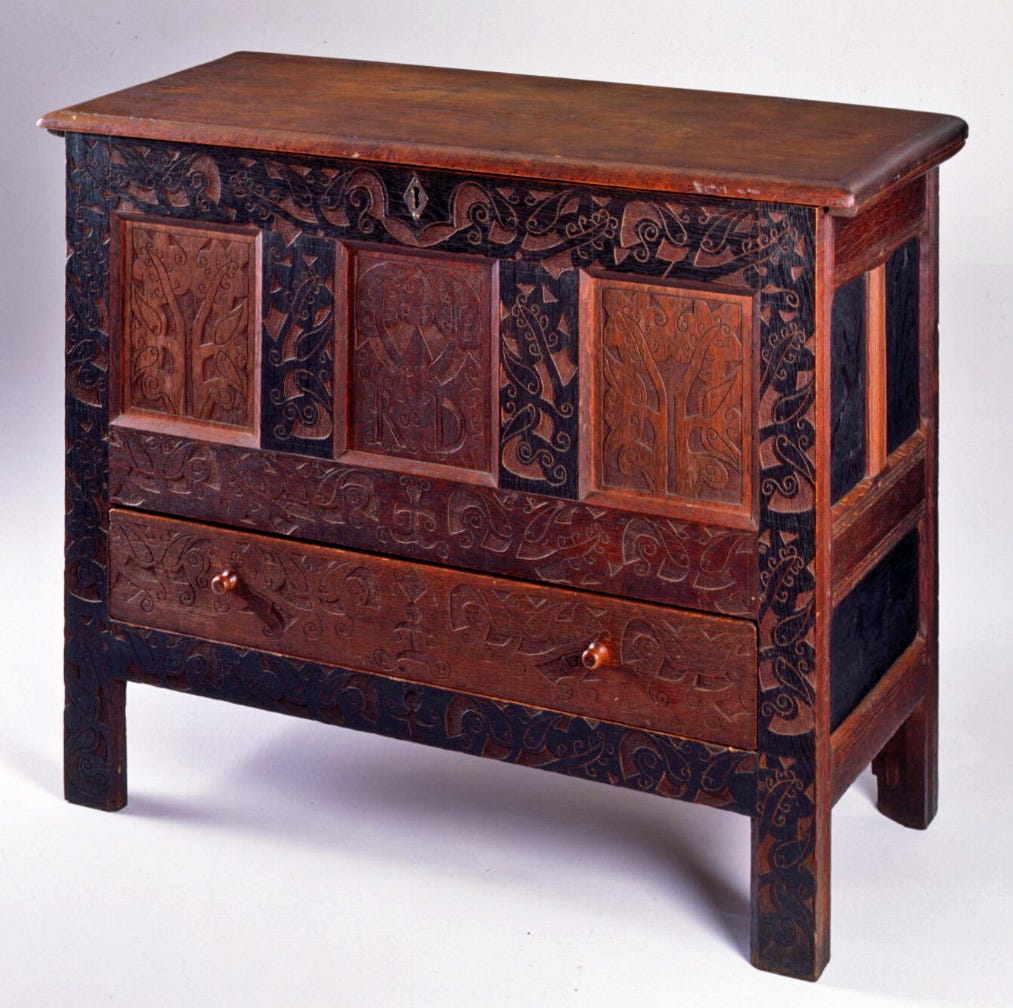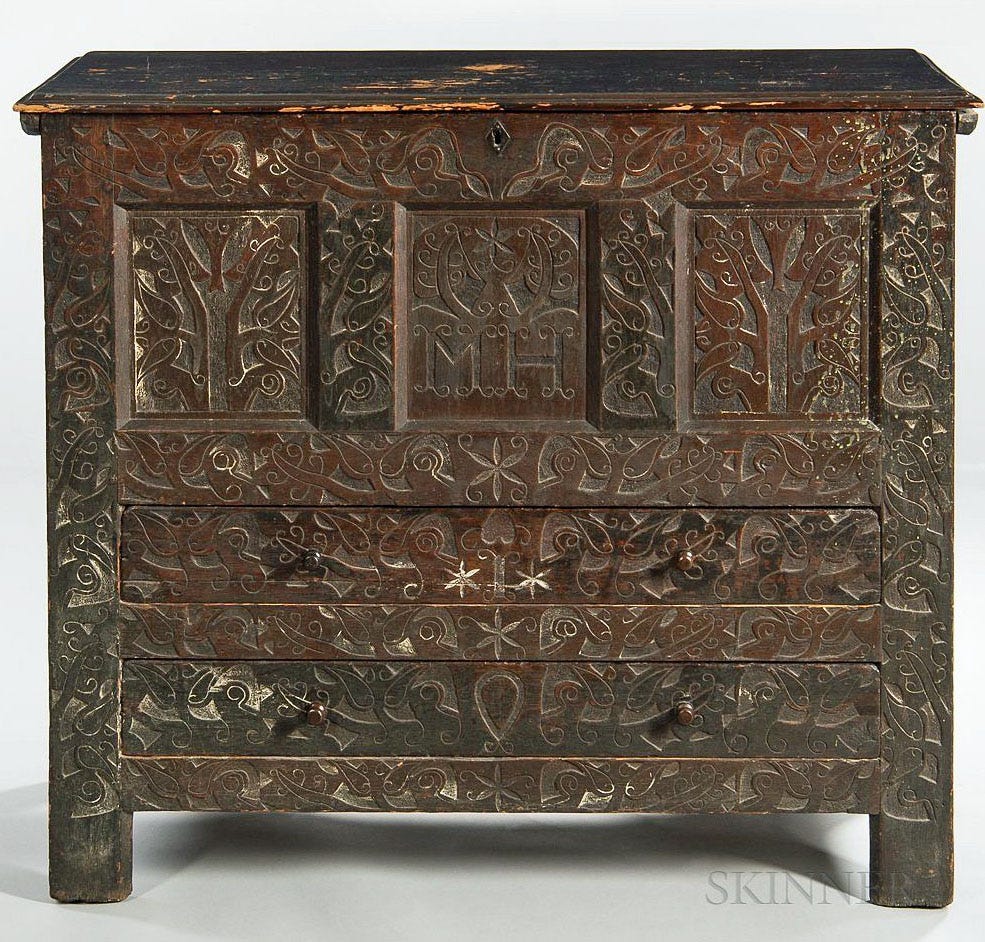Hadley Chests
No, I’m not making one (until someone orders one...)
When I was at Old Sturbridge Village recently, helping the curatorial staff evaluate some of the early furniture there, I saw two Hadley chests in their collection. I’ve rarely written about them, so thought now would be a good time to have an introductory look at them. I have no photos of my own of any Hadley chests - no digital ones anyway. Somewhere deep in storage are some printed photos. But I’ve plucked some stuff off the web that will cover us for now.
First, the name - it comes from a collector in the late 19th/early 20th century named Henry Wood Erving. He had lots of 17th-century New England furniture, including the chest above, now at Chipstone. He bought it in the western Massachusetts town of Hadley and referred to it as “my Hadley chest.” And so the name stuck.
Framed chests, usually with one drawer, sometimes two. Once maybe with 3 - I don’t know if there’s more than one three-drawer example. It’s hard to keep track of them, there’s so many chests. It’s a large body of surviving works - I don’t know how many, but more than 150 I’d guess. They were made along the Connecticut River in Massachusetts, near the tail end of the 17th and into the 18th century.
The carving is the first thing that catches your eye, often the color too. Originally painted. Most are initialed - usually two initials, usually for a woman. Maybe always for a woman. I know of one with three initials - that would be a husband/wife/surname scheme. Below is a two-drawer example that I copied from Skinner’s website - I forget what year this one sold. Maybe that’s got some of its actual paint history intact - then all it takes is some money for the people with equipment to analyze it & tell us what it looked like new.
The main distinction in the carving is the use of a template - the only New England carvings of the period done that way that I can think of. Back when I worked at then-Plimoth Plantation my friend Brian Weldy worked with me for one year in 2001. One project we had then was to make a copy of a Hadley chest for a client. Brian took that job on and aced it. He made this template, which still hangs in my shop. Just in case.
Keep reading with a 7-day free trial
Subscribe to Follansbee's Substack to keep reading this post and get 7 days of free access to the full post archives.




